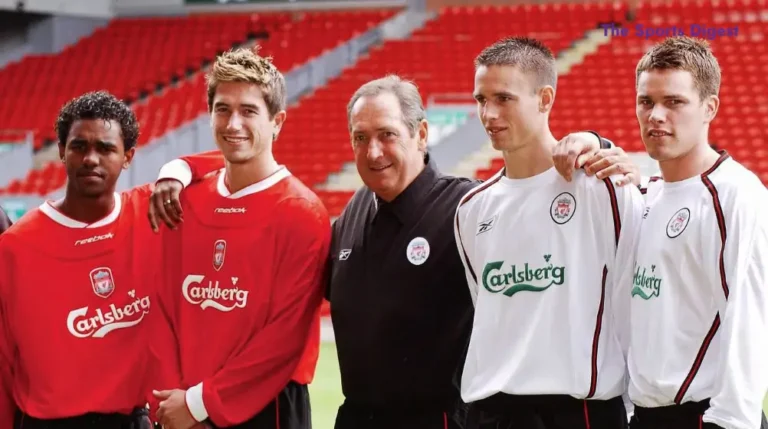FIFA World Cup: History and Significance Explained
The idea of creating the FIFA World Cup can be traced back to the first meeting of the Fédération Internationale de Football Association (FIFA) in 1904. During this meeting, there were efforts to develop football at the global level. Although the International Olympic Committee initially rejected the idea of such a tournament due to concerns about its potential impact on the Olympic Games, the idea remained alive until 1921, thanks to the tireless efforts of French lawyer Jules Rimet. Rimet believed that football should be more than just a sport – it should become a symbol of global unity.
Eventually, in 1928, FIFA agreed to establish the World Cup, and Rimet played a crucial role in bringing this vision to life. The tournament was to take place every four years and bring together the best teams from around the world. While there were several challenges in reaching this agreement, such as concerns about FIFA’s control over the sport and the potential impact on the traditional Olympic Games, Rimet’s persistence eventually led to the official approval of the tournament.
In the end, Uruguay was chosen to host the first World Cup, as the country was a football powerhouse at the time and had recently won the Olympic football tournaments in 1924 and 1928. Uruguay also offered various incentives to encourage teams to participate. Thus, the first FIFA World Cup kicked off in 1930.
Table of Contents
The First World Cup 1930: Uruguay’s Historic Beginning
In 1930, the first World Cup took place in Uruguay. The tournament had only 13 teams, as there were no qualification rounds, and all the teams played directly in the tournament. The teams were divided into groups, and Uruguay, the host nation, emerged as the victor, defeating Argentina in the final to win the inaugural World Cup.
The first World Cup faced numerous logistical challenges, particularly in terms of travel, as intercontinental travel was not as accessible as it is today. Despite this, the tournament attracted a large number of teams from both Europe and South America, signaling the beginning of what would become the world’s most prestigious football competition.
The victory of Uruguay in the first World Cup marked the start of a long and prestigious history of the tournament. Before the tournament began, FIFA decided that a valuable trophy would be awarded to the winner, leading to the creation of the “Victory Cup,” which would later be renamed the Jules Rimet Cup in honor of Jules Rimet, the president of FIFA who championed the tournament’s creation.
The Evolution of the Tournament and Challenges of World War II
The World Cup faced significant challenges during and after World War II. The 1942 and 1946 editions were canceled due to the global conflict, which posed enormous challenges, not only in terms of the competition itself but also due to economic and logistical difficulties. Countries involved in the war were focused on recovery, and football teams from many nations could not participate.
However, in 1950, after the war ended, the World Cup returned with even more excitement. The 1950 tournament also marked the return of many teams, with Brazil emerging as a powerful force in world football. This marked the beginning of the growing popularity of the tournament, which would continue to expand in the years to come.
Over time, FIFA worked hard to rebuild the competition and made sure to organize the tournament in a way that would allow more teams to participate. The tournament also began to gain recognition as a cultural and social event, where countries could celebrate not only their football prowess but also their national pride.
The Qualification System: Reaching the Tournament
Since the second World Cup in 1934, FIFA introduced a qualification system for teams, which included all six continents. The qualification process varies for each continent, with each region getting a set number of spots based on the strength of the teams in that region. The host country has always been automatically qualified, and the winner of the previous World Cup also had an automatic spot until the system was changed in 2006.
This system allowed for the inclusion of teams from around the world, making the World Cup a truly global event. In addition, as the years went by, the number of teams in the tournament grew. By 1998, the number of participating teams increased to 32, reflecting the global popularity of the competition.
Today, the qualification process involves millions of fans from every continent following their national teams as they strive to reach the final tournament. This system helps ensure that the World Cup is as competitive as possible, as it brings the best teams from all over the world to compete for the title.
The Jules Rimet Cup: The First Trophy for the Champion
Since the beginning of the World Cup, a prestigious trophy has been awarded to the winner. Initially called the “Victory Cup,” it was later renamed the Jules Rimet Cup to honor the president of FIFA who worked tirelessly to establish the tournament. The trophy was designed by French artist Abel Lafleur, and it was made from pure gold with a marble base. The design depicted the Greek goddess Nike, the goddess of victory, holding a golden bowl to symbolize the victory of the winning team.
The Jules Rimet Cup became one of the most famous and valuable trophies in sports history. It was awarded to the winners of the World Cup from 1930 until 1970. The last team to win the Jules Rimet Cup permanently was Brazil, after they secured their third World Cup title in 1970. This set the stage for the creation of a new trophy.
The Theft of the Jules Rimet Cup and Its Legacy
In 1983, the Jules Rimet Cup was stolen and has never been recovered. This event left a significant mark on the history of the World Cup. The theft of the iconic trophy led FIFA to commission the creation of a new FIFA World Cup trophy. This event also highlighted the importance of safeguarding valuable symbols in sports.
Despite the loss of the original Jules Rimet Cup, its legacy continues to live on. The Jules Rimet Cup is now a symbol of achievement in football history, and the tournament’s significance has only grown since its inception.
The FIFA World Cup Trophy: A New Beginning
In 1974, FIFA introduced a new trophy to replace the Jules Rimet Cup. This new trophy was designed by Italian sculptor Silvio Gazzaniga. Made from 18-carat gold, the FIFA World Cup Trophy features two human figures holding the Earth, symbolizing the global nature of the competition. The trophy stands 36.5 cm (14.4 inches) tall and weighs 6.175 kg (13.6 pounds), and its base is made of marble. The design represents the triumph of athletes at the peak of their careers.
The FIFA World Cup Trophy became the symbol of the tournament and is awarded to the winning team after every edition of the competition. Its value has increased significantly over the years, with estimates now placing its worth at around 10 million dollars.
The FIFA World Cup Today: More Than Just a Tournament
Today, the FIFA World Cup is the biggest sporting event in the world. Every four years, millions of fans from all corners of the globe tune in to watch the world’s best football teams compete for the prestigious trophy. The tournament has become more than just a sporting competition; it has become a cultural celebration that brings people from different countries together.
The FIFA World Cup also plays a major role in inspiring youth to pursue sports, encouraging cooperation and sportsmanship. It helps unite communities and fosters national pride, while also showcasing the joy and power of sport.
World Cup Champions: From Brazil to Argentina
Since its inception, many teams have emerged as World Cup champions, but Brazil stands out as the most successful team in the tournament’s history, having won the World Cup five times. Argentina, which won its third title in 2022, is another football powerhouse with a rich World Cup legacy. Each World Cup edition is filled with excitement, dramatic matches, and unforgettable goals that become part of football history.
Brazil, in particular, has been a dominant force, elevating the level of competition and entertaining football fans worldwide. Every FIFA World Cup brings new surprises, and some editions have featured legendary performances that define the history of the sport.
The Economic and Social Impact of the World Cup
The FIFA World Cup has far-reaching economic, social, and cultural impacts. Hosting the tournament brings significant benefits to the host country, including a boost to tourism, infrastructure development, and increased business activity. It also fosters a sense of national pride and identity for the people of the host nation and the participating countries.
Economically, the FIFA World Cup provides a significant boost to local markets, as fans travel to the host country and spend money on accommodation, food, entertainment, and souvenirs. It is also a catalyst for business and media industries, with broadcasters and sponsors generating enormous revenue.
The Future of the FIFA World Cup: What’s Next?
Looking ahead, the FIFA World Cup is expected to continue growing and evolving. Starting in 2026, the tournament will expand to 48 teams, which will bring about significant changes in the format and structure of the competition. This expansion will provide more teams with the opportunity to qualify, making the World Cup even more inclusive.
FIFA is also exploring ways to improve the tournament experience for fans, including the use of technology and artificial intelligence to enhance the viewing experience. The future of the World Cup will likely include more innovative ways for fans to engage with the competition.
Conclusion: The FIFA World Cup – The Pinnacle of Football
The FIFA World Cup remains the most prestigious and significant sporting event in the world. From its humble beginnings in 1930 to the modern-day spectacle, the tournament continues to capture the hearts of millions of people around the globe. It is not just a football tournament; it is a celebration of sport, unity, and human achievement. Every four years, the world comes together to witness the greatest football players battle for the ultimate glory, making the FIFA World Cup an event like no other.
Have you ever read an article like this?
There are no reviews yet. Be the first one to write one.






